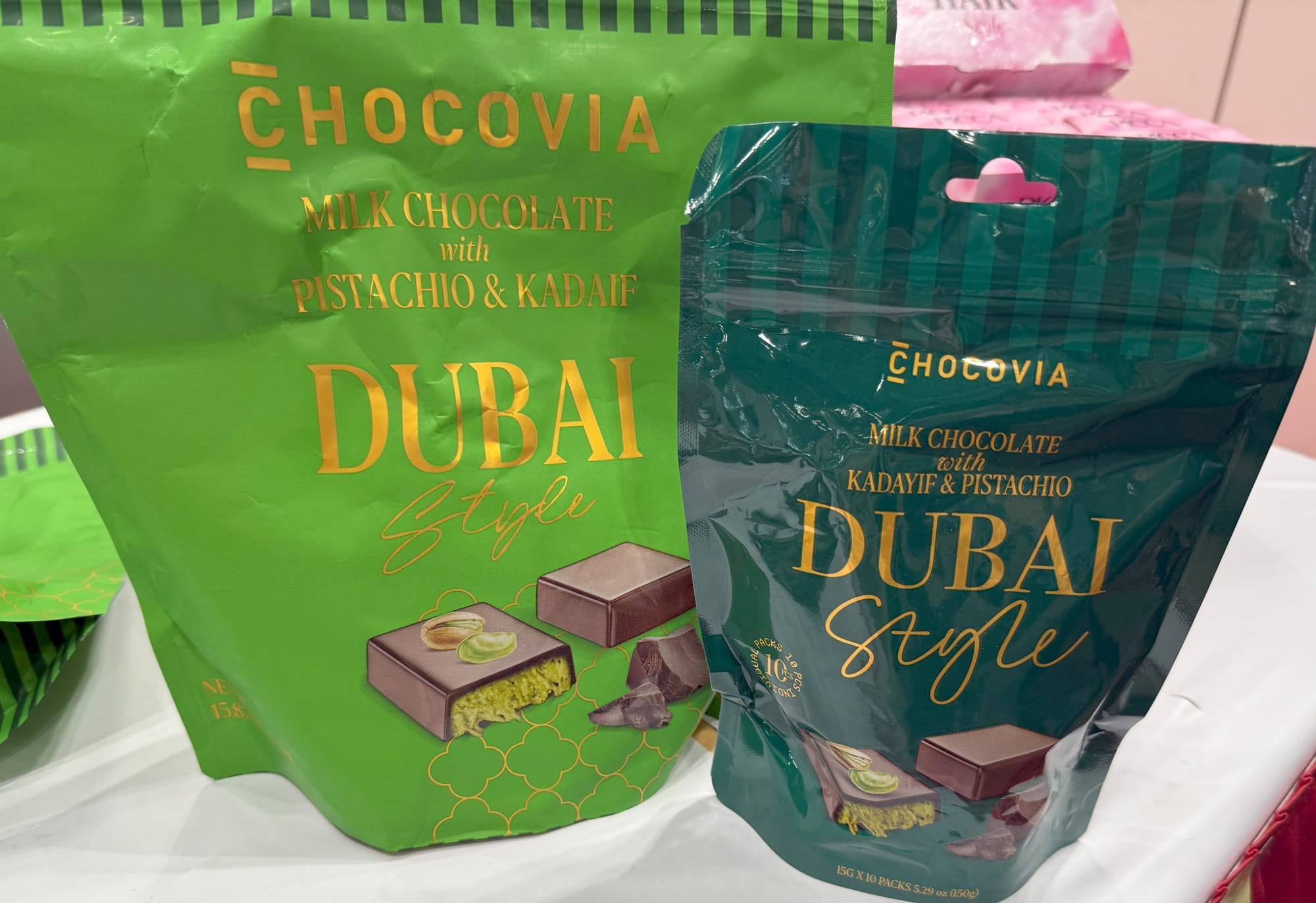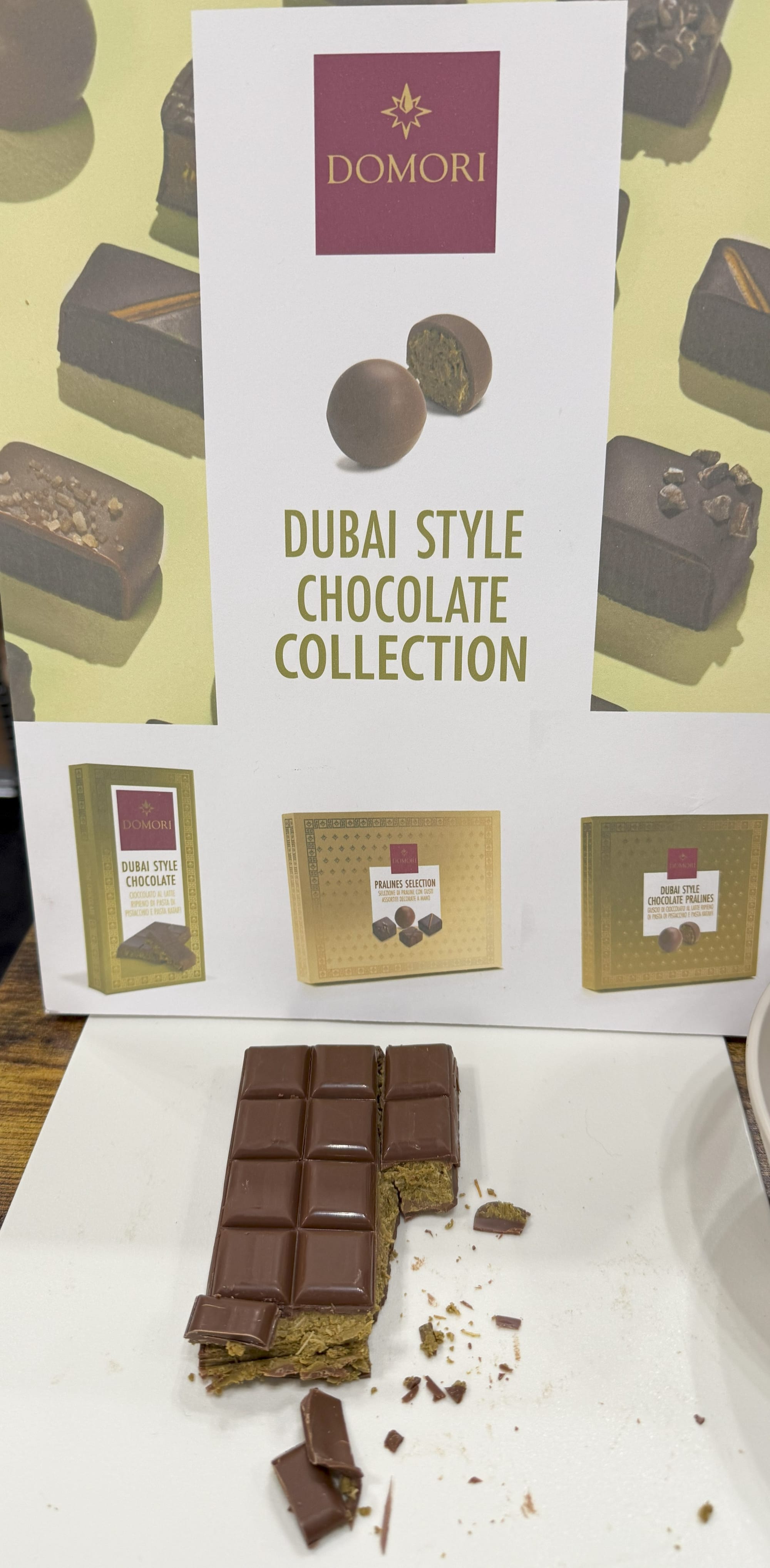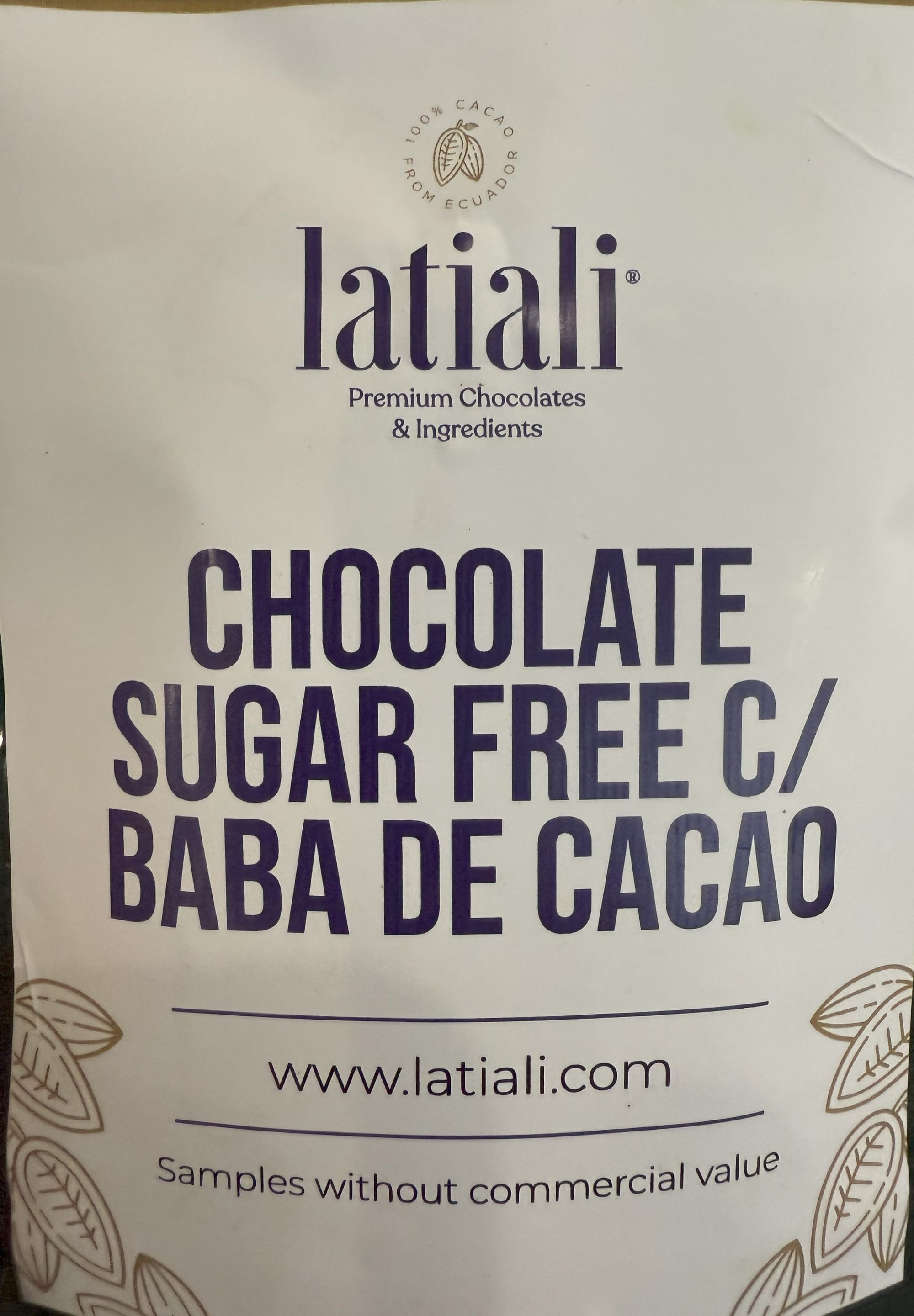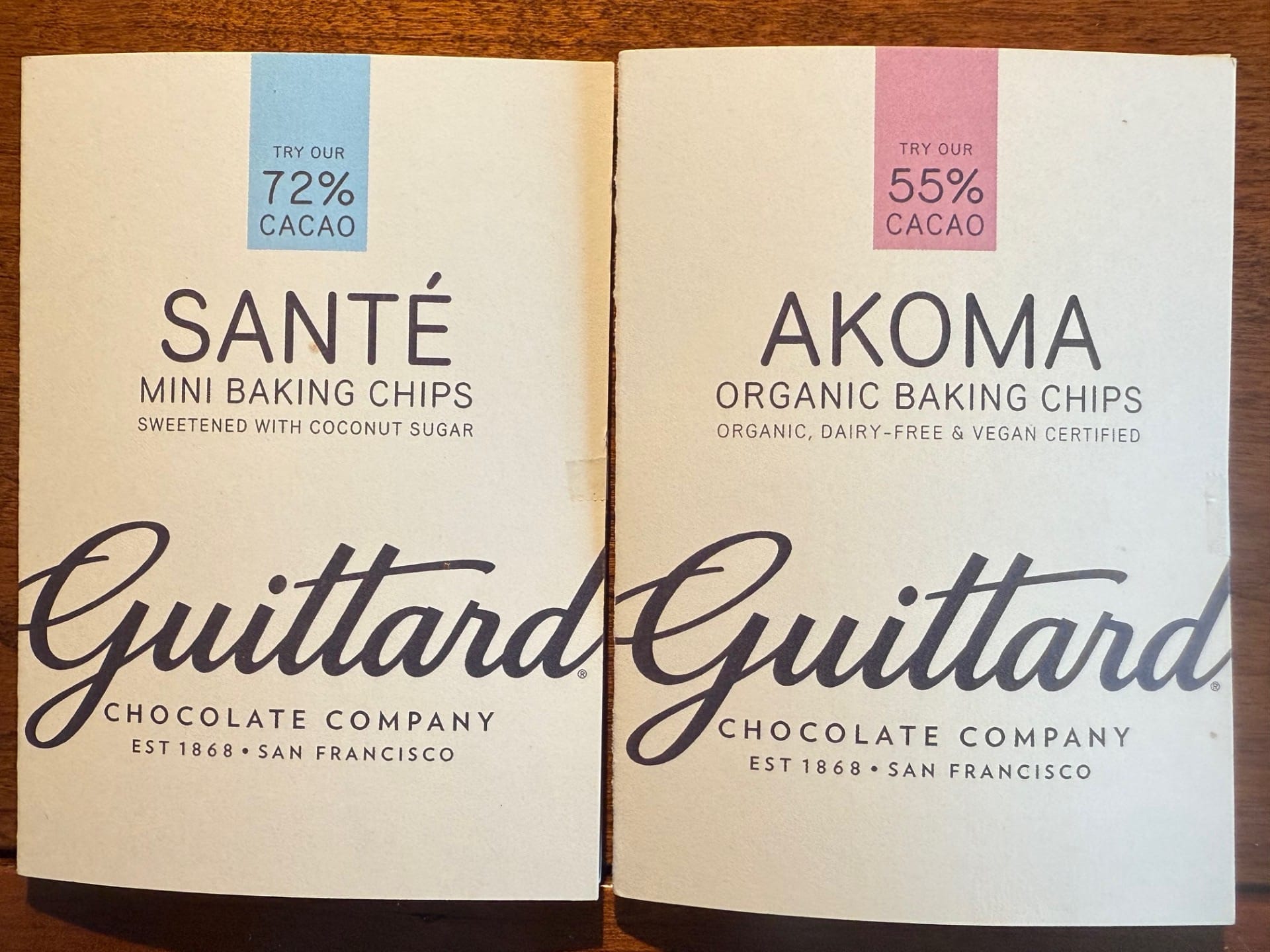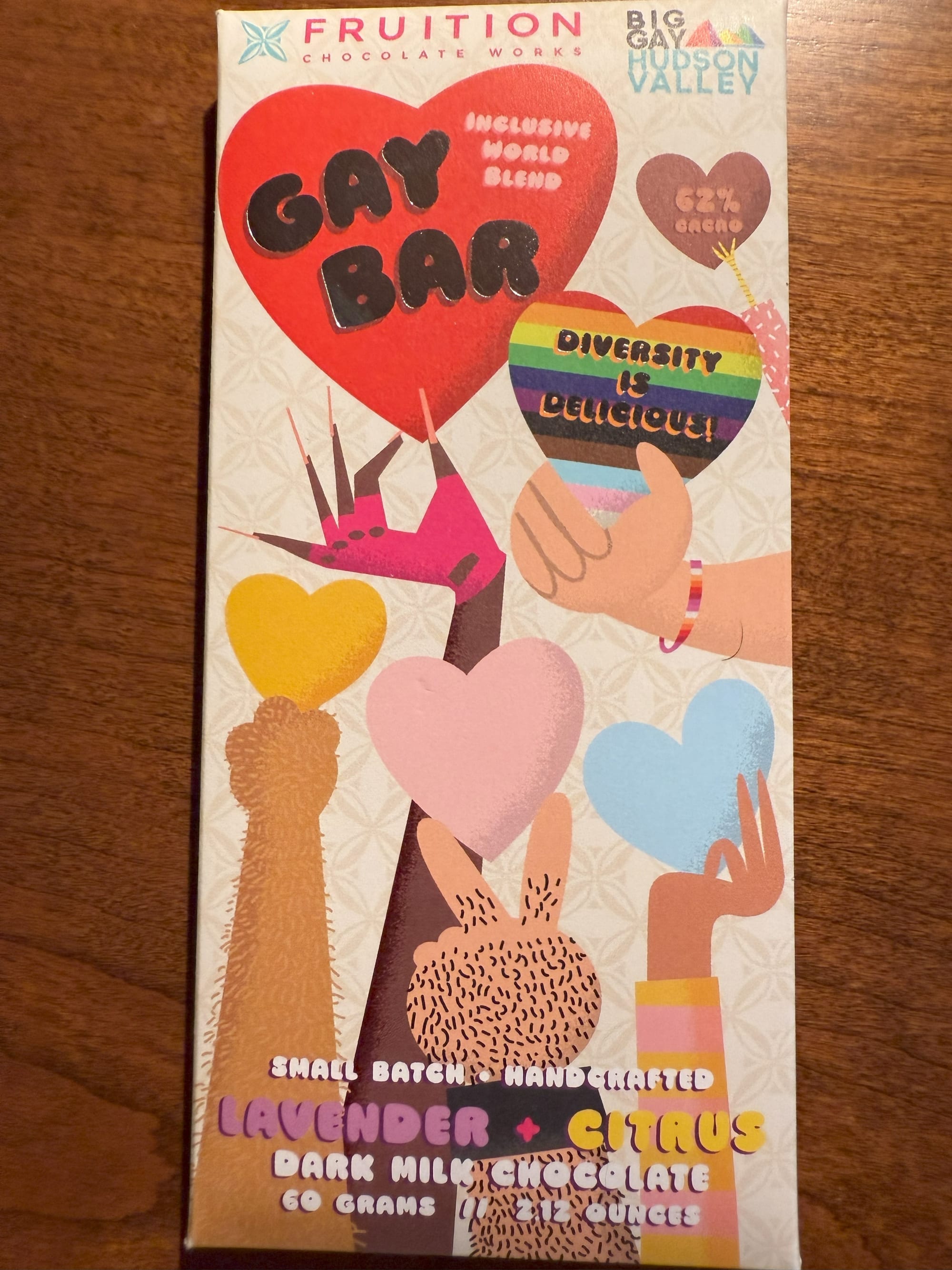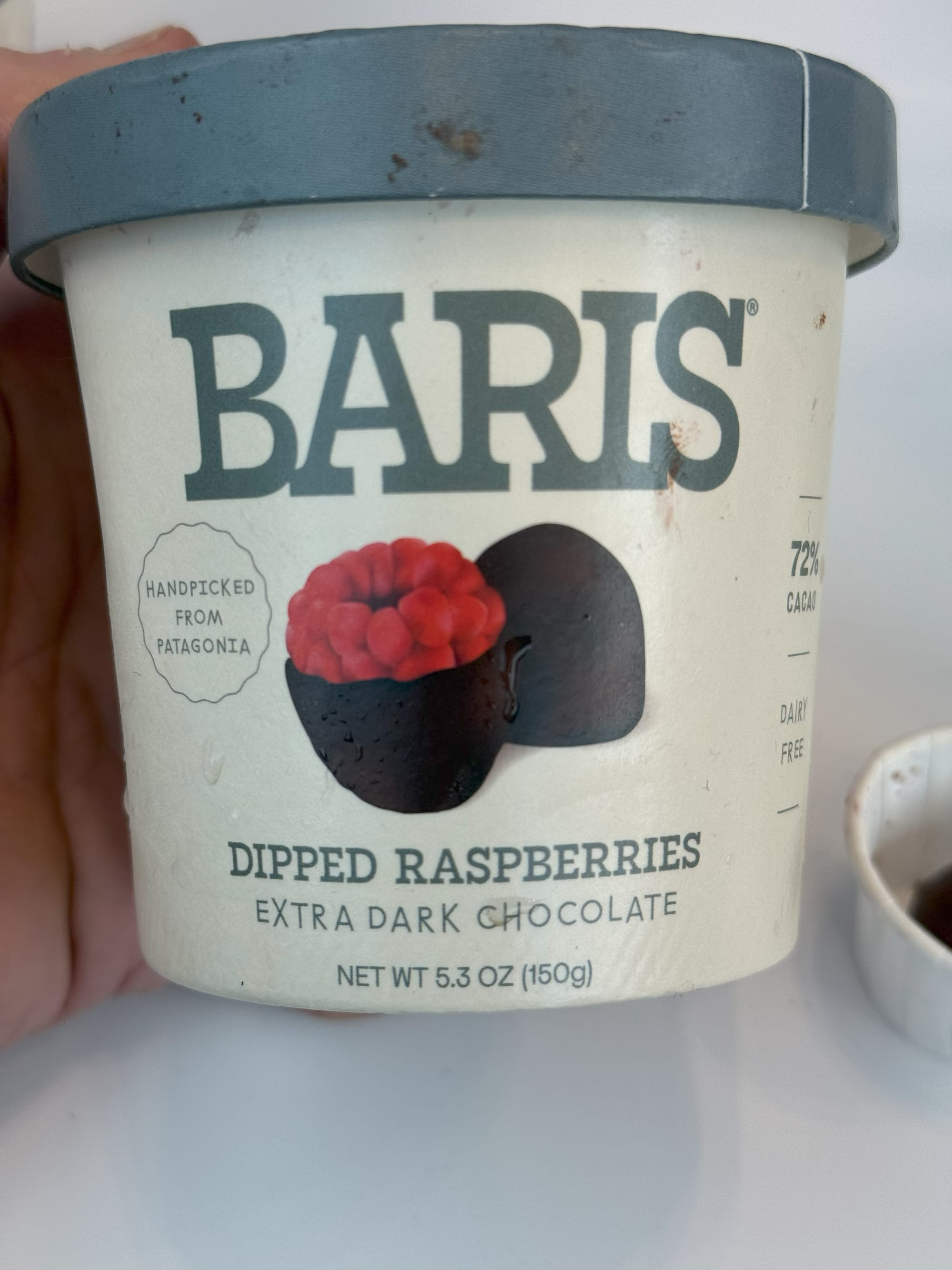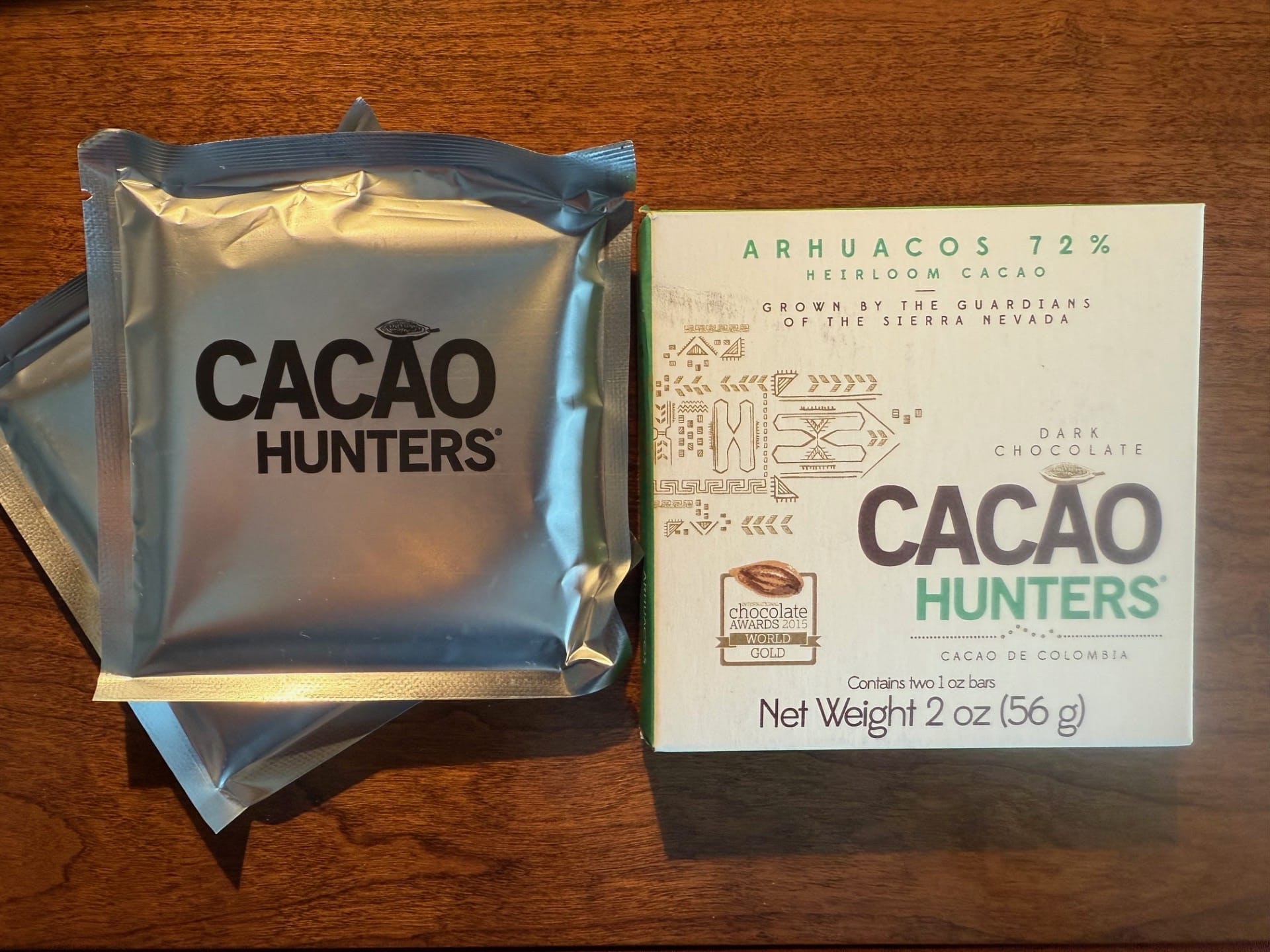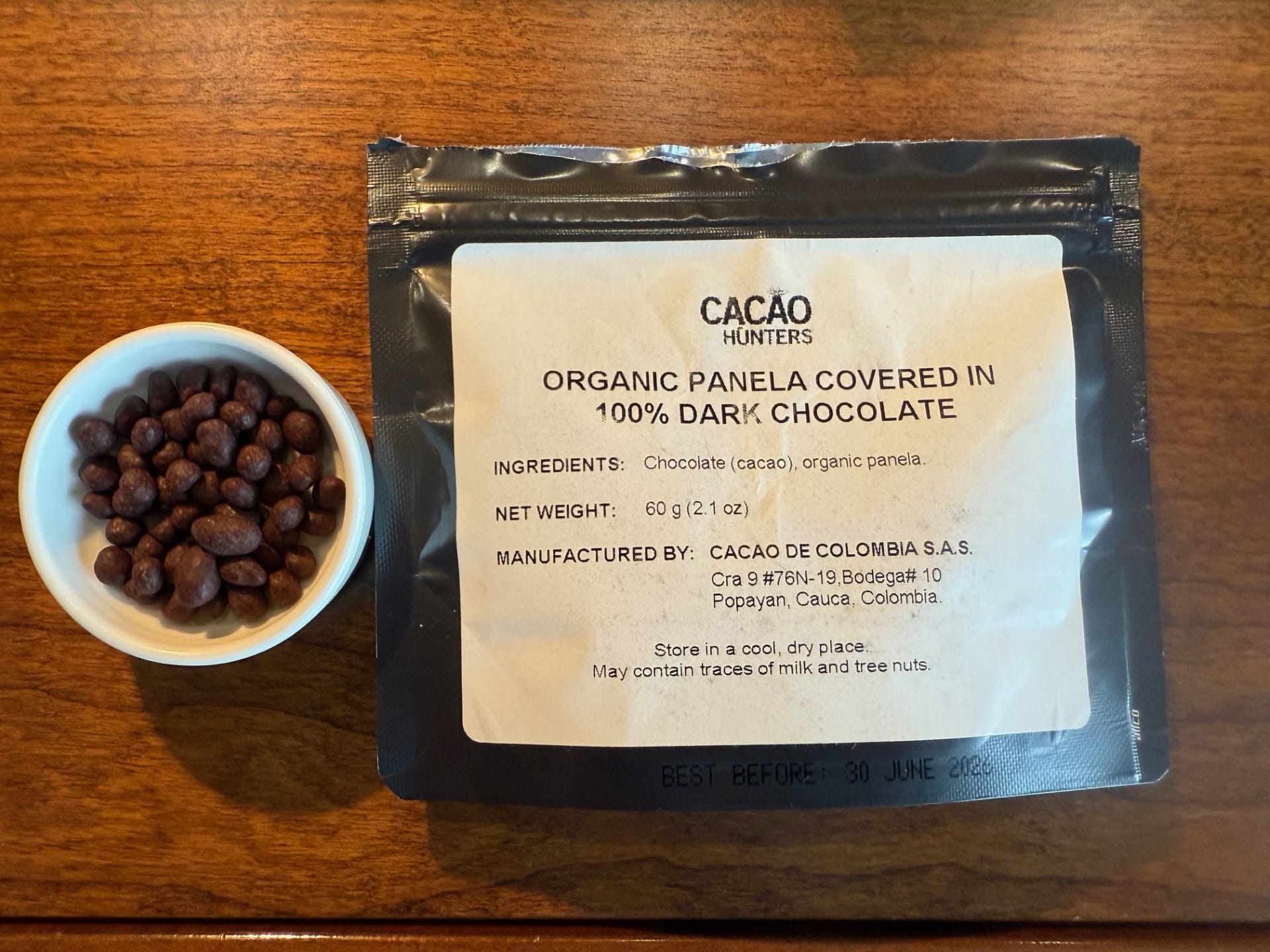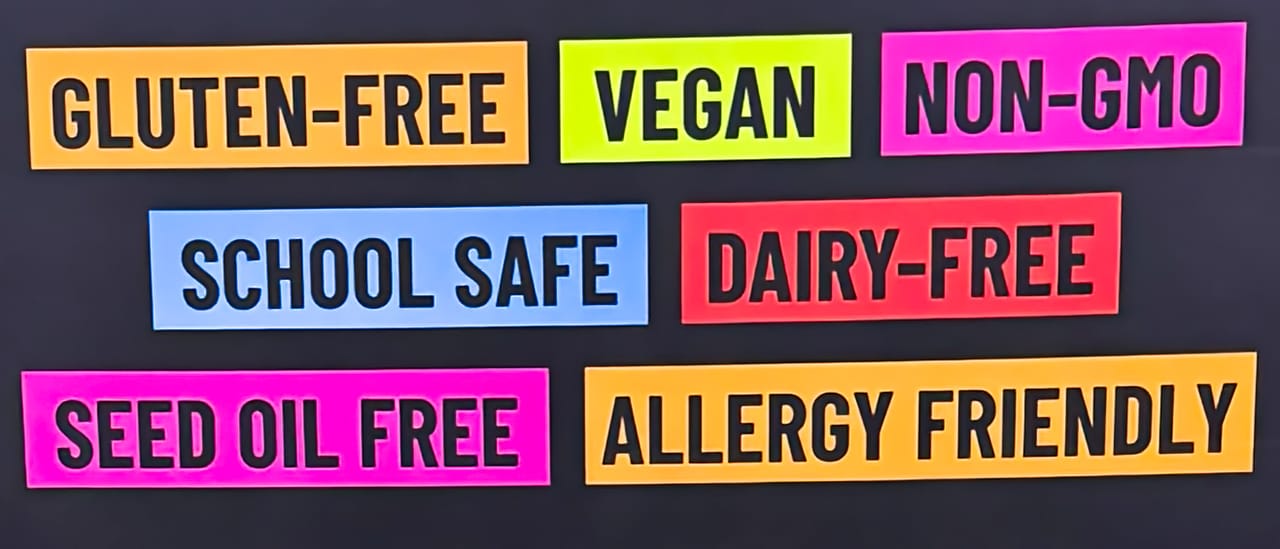Musings From the 2025 Fancy Food Show
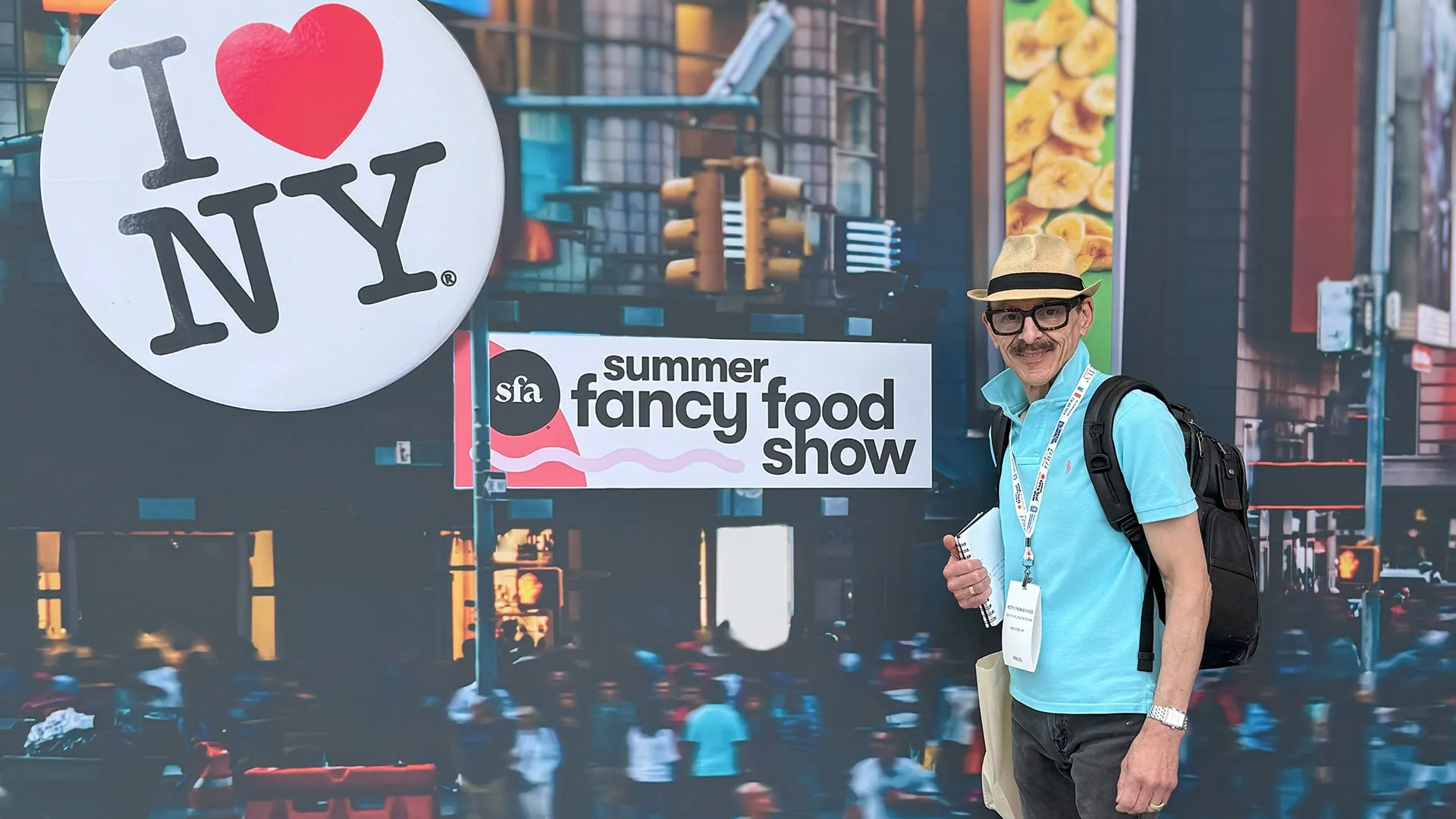
The 2025 Fancy Food Show (FFS) in New York City, is/was a full-on international event, the largest of its kind in the US ⋯
⋯ of course, most of the exhibitors had likely committed to exhibiting before tariff mayhem in the US threatened their businesses. It might even have made them even more serious and focused.
FFS is but one activity of the Specialty Food Association (SFA), and “Fancy” is the operative word here – no one pretends this is budget-friendly food.
The TL;DR
• The breakout: “Dubai chocolate”.
• More focus on using the whole cacao fruit.
• Label competition: “Clean, Cleaner, Cleanest”.
• Coconut sugar is here to stay.
•So long, soy lecithin. It’s sunflower power now.
The Deal With “Dubai Chocolate”
No, Dubai doesn’t grow cacao, but “Dubai-style” chocolate was prominent everywhere.
It’s a flavor profile, incorporating pistachio in some form and usually kataifi, the Middle Eastern pastry notable for having an appearance like shredded wheat.
That’s pretty much all it is – very finely shredded phyllo dough, which is usually bundled in/around various fillings of nuts and honey/sugar syrup, often with additional flavorings such as rose water. It’s also part of Greek pastries, and having a background that’s Greek and Lebanese, I’ve been eating homemade kataifi since I can remember.
How is it “Dubai” chocolate made? With pistachios as a “paste” (nut butter, but “paste” has a more premium vibe), or as ground pistachios, with the crunchy kataifi replacing the very-French feuilletine. All layered or mixed together, then covered with milk chocolate. Almost always milk chocolate, notably not Domori’s version.
Truth in labeling – Dubai “style.”
While it’s called Dubai “chocolate,” chocolate is the wrapper ⋯ playing a visible but definitely supporting role. When I inquired about the type of chocolate used, some of the reps I spoke with had no answer. One responded with “Belgian chocolate." (Whatever that means.)
Domori’s “Dubai chocolate” bar outshone the rest for me.
The rep advised: Check the percentage of pistachio in the bar. Domori’s was 38%. Some are as low as 20%. Domori’s seemed smoother, less sweet, with more pistachio notes. An overall better bite.
In the end, it’s chocolate confectionery, so more focused on the non-cacao ingredients.
100% bar: Using the whole fruit
Not a new idea, but Latiali, an Ecuadorian maker, offered a “100%” bar that relied solely on cacao pulp for sweetening. I judged the sweetness as similar to a 75-85% bar.
What caught my attention: The bar was smooth as silk, with none of the grittiness of bars sweetened with other fruit sugars (date, coconut, etc.). The process, per the Latiali rep: they take the pulp, apply enzymes to isolate the “sugar” and remove solids, then culture it to remove unwanted flavor notes and bacteria, followed by a process similar to “distilling”, so only the sweetness remains.
The rep wouldn’t disclose how much of the bar was from the bean, but notes of cacao fruit surfaced. This company’s products have won awards, and their website lists them all.
Got coconut sugar?
This ingredient had a moment at the show, with more makers offering products sweetened with coconut sugar. Guittard got on the bandwagon, offering mini baking chips. Coconut sugar can be more vegan-friendly, as some cane sugar syrup is filtered through charcoal that may have animal bones and other remains in it.
One maker acknowledged that coconut sugar is harder to work with and more costly, but said it filled a niche, so it’s in some of their products.
Always Keep a Sense of Humor: Fruition For The Win
The folks at Fruition Chocolate Works brought some levity to the show. At their headquarters in upstate Shokan, New York, they are active in the LGBTQ community and made a limited edition “Gay Bar” for Pride month.
It’s a 62% dark milk bar flavored with lavender (wink!) and citrus essential oils. Their subtle hand with this tricky floral was spot on. Props to Fruition for this one. Their 85% Tumaco bar, also on display, remains a personal fave.
New & “Healthy-ish”
This was the last thing I tasted at the show. Didn’t expect much, but these worked as a “healthy-ish” treat that’s also good for those who only want a few bites of something without the whole commitment of a bar or a standard dessert.
From an Argentinian maker, Baris. Fresh-frozen, extra dark, chocolate-covered raspberries. 5 berries have:
• 70 calories (per 28 gm serving)
• 7% of the RDI for fiber, 10% of iron
• Only 4 gm added sugar
It also comes double-dipped in white, then milk chocolate. It’s the same price as a high-end pint of ice cream, for a lot fewer calories.
Packaging: Separate but equal
Props to Cacao Hunters’ approach to having two 1-oz squares in each 2-oz package. One ounce is a perfect snacking size (IMHO), and the other one can stay sealed until ready to eat. They use strictly Colombian beans and I was given 3 heirloom bars; a 72%, a 73%, and a 74%. For me, the 73% was fruity, with notes of cherry and raspberry, and later some dark sugar, almost a panela.
Speaking of panela, Cacao Hunters also makes tiny pearls of panela enrobed in 100% chocolate. These would be far more delicious than those hideous “sprinkles” on ice cream cones or atop whipped cream on a hot chocolate.
Some “bones to pick”
“Clean labels” get louder: This term has absolutely no formal definition, so a "commitment to clean-labelling” is self-defined. When I see a label boasting all manner of “free-froms,” I’m concerned they may be interpreted as health claims.
They’re not. They're descriptions.
Any implication that a product is better-for-you, or “cleaner,” can foster health myths and add to confusion. I spend a lot of time responding to questions about this.
Sunflower lecithin isn’t “better” lecithin; it just subtly implies it’s non-GMO.
Unlike soy, there are no GMO sunflowers. One maker I spoke with said he uses it, despite the added cost, because “I want to avoid all the controversy.” Fair enough.
Closing Thoughts
Props to craft chocolate makers producing delicious, high-quality chocolate, and who also develop relationships with farmers and contribute to regenerative agriculture. They make it worth a farmer’s time to use good practices for growing, fermenting, and drying their beans.
Some of us do notice.
